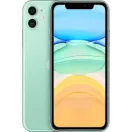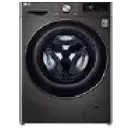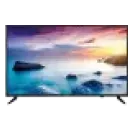4K vs. Full HD - Which TV Resolution is Right for You
The evolution of television technology has improved the average consumer's screen viewing experience by leaps and bounds. Among other things, improvement in screen resolution remains one of the best outcomes of this digital age. Televisions have come a long way over the last few decades, evolving from HD and Full HD to 4K and 8K UHD screens.
While 4K and Full HD may be standard terms used in the television market, the 4K vs Full HD dilemma still puzzles most of us when shopping for a new TV. To understand which resolution is best for you, you first need to know why resolution is necessary, the differences between the two, and when picking one over the other is prudent.
What is resolution
Resolution refers to the number of pixels present on the television screen. Every digital image is made of tiny dots called pixels. These tiny dots combine to create a comprehensive image or frame. The higher the number of pixels, the higher the display resolution and the more precise the image.
Over the years, television screens have evolved from the basic HD-Ready (720p) screens to the latest 8K (7,680p) screens. The display's horizontal and vertical pixel counts are considered while calculating the total display resolution of a television screen.
Differences between 4K UHD and Full HD
You should first know the differences to pick a side in the 4K vs Full HD debate. These differences between 4K UHD and Full HD screens can be summed up as follows:
- Pixel count: The main difference between 4K UHD and Full HD displays stems primarily from the number of pixels each screen offers. Full HD screens boast a pixel resolution of 1920 x 1080 pixels. This translates to a total pixel count of over 2 million. Alternatively, 4K UHD TVs have an ultra-high definition resolution of 3840 x 2160 pixels, meaning a total pixel count of over 8 million pixels.
- Image sharpness: Since 4K UHD TVs have four times as many pixels as Full HD screens, 4K screens render sharper and clearer frames. These screens offer high PPI (pixel per inch) or pixel density, ensuring more immersive and life-like visuals.
- Screen size: Another crucial point to remember in the FHD vs UHD debate is that 4K screens are more commonly used in larger TVs. Most brands offer 4K resolution on televisions of 43-inch or above. Alternatively, FHD screens are more common on smaller 32-inch and 40-inch screens.
- Price: The 4K vs full HD comparison also has a price aspect. The higher pixel count, combined with the larger screen size of a 4K UHD TV, makes them costlier than FHD screens. So, if you wish to invest in a top-notch viewing experience, you must pay more.
Why choose one resolution over another
You have to rely on your personal preferences, viewing distance, and budget to find the solution to the 4K vs. Full HD dilemma. Here is when choosing one over the other makes sense:
- Detailed large-screen experience: Larger screens and sharper images are hallmarks of 4K TVs. So, if you are a cinephile or an avid sports enthusiast who wants to relish frames with greater details on a large-screen TV, a 4K TV would be a good investment.
- Viewing distance: Experts recommend a viewing distance of at least 1.5 times the diagonal length of your TV. If you own a 55-inch 4K TV, you should sit around 3.28 feet away from the TV. Choosing a 4K TV over an FHD model makes sense if you sit far away from your TV. If you watch TV from a distance, you might not notice the subtle difference in image sharpness, especially given the smaller size of FHD screens.
- Budget: Prices of 43-inch 4K TVs in India start from around Rs. 20,000, while a 55-inch or 65-inch 4K TV will cost you even more. Alternatively, 32-inch FHD TVs start from Rs. 6,999 onwards. In other words, shopping for a 4K TV makes sense when you do not have budget constraints. However, opting for a Full HD TV might be more prudent if you work with a tight budget.
- Content source pixel count: When choosing between 4K and FHD screens, you should also consider the pixel resolution of the primary content source. While 4K TVs can upscale lower-resolution content, you will still notice pixel-level imperfections. So, if your gaming console is 4K compatible or streaming platform offers native 4K content, opting for a 4K screen makes sense. If not, you can settle for an FHD screen and enjoy detailed frames for a fraction of the cost.














